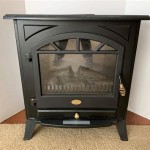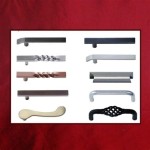Stove Fireplace Regulations: Essential Aspects for Homeowners
Stove fireplaces provide warmth, ambiance, and a focal point to any home. However, ensuring they are installed and used safely is crucial to prevent accidents and protect your property and family. Here are the essential aspects of stove fireplace regulations you need to know:
1. Installation Requirements
Stove fireplaces must be installed by a qualified professional who adheres to the regulations set forth by the National Fire Protection Association (NFPA) and local building codes. Improper installation can lead to fire hazards and carbon monoxide leaks.
2. Chimney and Flue Requirements
Stove fireplaces require a properly sized and installed chimney and flue to safely vent combustion gases out of the home. The chimney should extend above the roofline and be properly capped to prevent water damage and downdrafts.
3. Clearances to Combustible Materials
Stove fireplaces must maintain specific clearances to combustible materials, such as walls, furniture, and carpets. These clearances are determined by the type of stove and its heat output.
4. Fuel Restrictions
Stove fireplaces are typically fueled by wood or gas. However, it's essential to follow the manufacturer's instructions and only use approved fuel types. Burning unsuitable materials can damage the fireplace, create dangerous emissions, or cause a fire.
5. Operating Procedures
Follow proper operating procedures to ensure the safe use of your stove fireplace. Never leave the fire unattended, and only burn small, dry logs that are appropriate for the size of the fireplace. Use a fire starter or kindling to ignite the fire, and do not overload the fireplace with fuel.
6. Regular Maintenance and Inspections
Regular maintenance, such as cleaning the flue and maintaining the chimney and stove, is essential to prevent buildup and ensure efficient operation. Additionally, it's recommended to have your fireplace inspected annually by a qualified technician to check for any potential problems.
7. Fire Safety Precautions
Take necessary fire safety precautions when using a stove fireplace. Keep a fire extinguisher nearby and ensure smoke detectors and carbon monoxide detectors are in working order. Never dispose of hot ashes improperly, and always let them cool completely before removal.
8. Local Regulations
It's important to be aware of any specific regulations or codes that apply in your local area regarding stove fireplaces. Contact your local building department or fire marshal for information on any additional requirements or restrictions.
Conclusion
By adhering to stove fireplace regulations, you can ensure the safe and enjoyable use of this home amenity. Follow proper installation, operating, and maintenance procedures, and always prioritize fire safety. Create a cozy and inviting atmosphere while maintaining the safety of your home and family.

Is My Fireplace Large Enough Recess Size Diagram

Hearth Regulations Size Thickness Requirements Me And My Glass

Stove Hearth Size And Thickness Stoves

Hearth Marking Hetas
Hearth Clearances Diynot Forums

Building Regulations And Wood Burning Stoves

Fnr 100

Stoves Suitable For A 12mm Hearth Installation

Log Burner Installation Guide To Chimney Flue On Wood Burning Stove

Installation Deco Heat The Fire Stove








